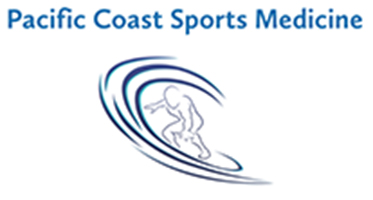Sports Medicine

Sports Medicine, also known as sports and exercise medicine (SEM), is a branch of medicine that deals with the treatment and prevention of sports and exercise-related injuries and improving fitness and performance. The main objective of sports medicine is to help individuals engage in sports and exercise in a safe and effective manner to accomplish their training goals.
Arthroscopic Surgery

Arthroscopic surgery, also known as arthroscopy, is a surgical procedure to visualize, diagnose, and treat problems inside a joint using a specialized instrument known as an arthroscope. An arthroscope is a flexible fiberoptic tube that contains a small lens or camera and a lighting system to magnify and illuminate structures inside a joint.
Ligament Reconstruction

Ligament reconstruction is surgery to reconstruct a torn ligament using a graft or artificial prosthesis. Ligaments are tough, non-stretchable fibers that hold your bones together. Ligament reconstruction is performed to improve joint function and stability and may be indicated for shoulder, elbow and knee injuries.
Joint Reconstruction Surgery

Joint reconstruction surgery includes various surgical procedures to reconstruct and repair the joints damaged due to arthritis or trauma. A joint is an area where two or more bones meet. Most joints permit a gliding movement of the bones against each other to enable different kinds of movement.
Cartilage Restoration

Cartilage restoration is a procedure performed to replace the worn-out cartilage with new cartilage. It is usually performed to treat small areas of cartilage damage usually caused by sports or traumatic injuries. It is not indicated if you have advanced arthritis of the joint.
Cartilage Repair and Transplantation

Cartilage cell transplantation is a technique of transplanting healthy cartilage cells to replace damaged cartilage cells. These procedures are recommended for young individuals with a single articular defect. It is usually performed on the knee joint but may also be used to treat the shoulder and ankle joints.
Osteochondral Autograft Transfer System (OATS)

Osteochondral autograft transfer system (OATS) is a type of cartilage transfer procedure. In the OATS procedure, your surgery usually begins with an arthroscopic examination of your knee. Arthroscopy is performed in a hospital operating room under general anesthesia.
Wrist Fracture

Wrist fractures may be caused by a fall on an outstretched arm, vehicular accidents or workplace injuries. Certain sports such as football, snowboarding or soccer may also be a cause of wrist fractures. Wrist fractures are commonly associated with osteoporosis, a condition marked by the brittleness of the bones.
Adult Forearm Fractures

The forearm is made up of 2 bones, namely, the radius and ulna. The primary function of your forearm is rotation i.e., the ability to turn your palm up and down. The fracture of the forearm affects the ability to rotate your arm, as well as bend and straighten the wrist and elbow.
Femur Fracture

Femur fractures may be caused by high energy injuries such as a fall from height or a motor vehicle accident. Patients with osteoporosis, bone tumor or infections, or a history of knee replacement are more prone to femur fractures.
Tibial Fractures

The lower leg is made up of two long bones called the tibia and fibula that extend between the knee and ankle. The tibia or shinbone is the larger of the two bones. It bears most of the body’s weight and helps form the ankle joint and knee joint.
Elbow Fractures

Elbow fractures may occur from trauma, resulting from various reasons: a fall on an outstretched arm, a direct blow to the elbow or an abnormal twist to the joint beyond its functional limit.
Osteochondral Allograft

Osteochondral grafting is a method of treating cartilage injuries that expose the underlying bone. An osteochondral allograft is a piece of tissue containing bone and cartilage that is taken from a deceased donor to replace damaged cartilage that lines the ends of bones in a joint. The allograft tissue is shaped to precisely fit the defect in the damaged joint of the patient and then transplanted to repair the damage.
Achilles Tendon Rupture

The Achilles tendon is a strong fibrous cord present behind the ankle that connects the calf muscles to the heel bone. It is used when you walk, run and jump. The Achilles tendon ruptures most often in athletes participating in sports that involve running, pivoting and jumping. Recreational sports that may cause Achilles rupture include tennis, football, basketball, and gymnastics.
Achilles Tendinitis

The Achilles tendon is a tough band of fibrous tissue that runs down the back of your lower leg and connects your calf muscle to your heel bone. The tendon is used when you walk, climb, jump, run and stand on your tip toes.



